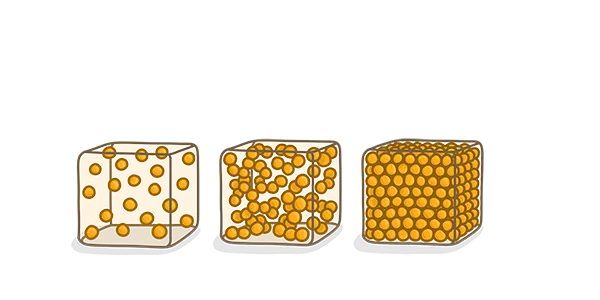Energy Structure
Introduction
The fabric of the natural world is held together by one fundamental thread: structure. From the infinitesimal atoms that form matter to the massive planets that dominate our solar system, structure is the foundation upon which everything rests. Without it, the world would unravel into chaos and collapse on itself.

Each element of the natural world has its own unique structural integrity. Take solids, for example. They are made up of tightly packed atoms that give them a fixed shape and form. Liquids on the other hand, are made up of particles that are arranged haphazardly, resulting in a shapeless and formless substance. As such, solids are naturally firmer and more concrete than liquids.
The same principle applies to our Observing Functions. When they are solid, the information we perceive tends to be more defined and precise. In other words, our observations are clear, distinct, and detailed. In contrast, Fluid Observing translates into more fluid and flexible perceptions, its structure less fixed and rigid.
The structure of our perceptions—however Solid or Fluid—depends on the type of energy that fuels our Type Perspective. If it is fueled by Solid energy, we call it Solid Observing. If it is fueled by Fluid energy, we call it Fluid Observing. Ultimately, it is the interplay of these two opposing energies that determine the structure of our perceptions, shaping our view of the world around us.
Solid Observing
Those with Solid Observing are often confident with their perspectives. Whether it be details, theories, facts, or insights, Solid Observers possess certainty and clarity in their perceptions. As a result, their memories or ideas are usually more concrete and complete, leaving little room for ambiguity or doubt.
These individuals often express unwavering worldviews that are grounded in their subjective experiences, giving them an unshakable sense of confidence in their understanding of things. Consequently, they tend to be certain with both their factual and abstract perceptions, be it a random detail about a famous figure or a speculative theory derived from scattered facts.
However, these energies must be balanced for one's perceptions to be whole. An excess of Solid Energy in one’s Observing functions can lead to overconfidence in one’s viewpoints, causing individuals to be rigid and fixated on particular facts, claims, or theories that may not be entirely true. Such stubborn certainty shuts off their minds to different perspectives, blinding them with a distorted perception of the world.
Fluid Observing
Those with Fluid Observing are often flexible with their perspectives and understanding of information. None of their perceptions are set in stone, and all it takes is the addition of a new fact, or a shift in environment for them to change their points of view.
Therefore, their worldviews are constantly changing and evolving depending on the circumstance they find themselves in. They place little importance on precise facts and figures, as a rough estimate is usually good enough for them. Their visions tend to come in vague snippets, and their theories are often open-ended, for the connections between their ideas are always in flux.
However, as mentioned earlier, it is crucial to maintain balance between the energies to allow for healthy perceptions. An excess of Fluid Energy in one’s Observing Functions can lead to constant uncertainty in one’s own perspectives, causing individuals to be unsure of everything. Such individuals may struggle badly with facts and details, making their ideas too vague to be grasped, or their memories too fickle to rely on.
Conclusion
As you learn about Solid Observing and Fluid Observing, you may also be curious about Solid Deciding and Fluid Deciding. Let us touch upon that aspect in the next part.
Read next part → Energy Construct [Energy]
